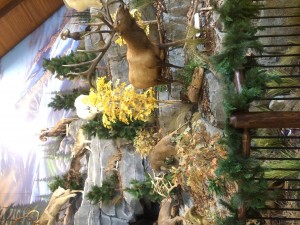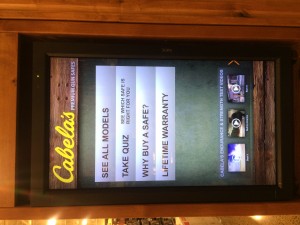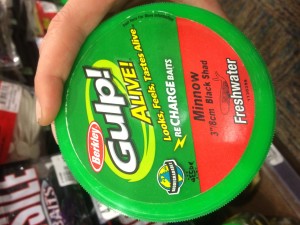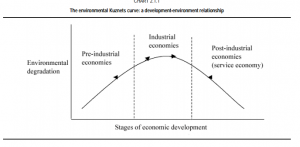***Disclaimer: The first half of this response paper may be unfulfilled because I was unable to attend Hawk Mountain myself.
Although I was not able to see the Hawk Mountain Visitor Store in person, I did visit their online website (https://www.hawkmountain.org/store/categories.asp ). It appears as though the main products in the store and those that information and education based. The books on sale all have conservation themes and give information on raptors and their importance. There are also accessories that are branded with “Hawk Mountain Sanctuary” which is an important form of advertisement for the sanctuary (I assume it is non-profit and survives on donations). Even these accessories are quaint and subtle, which markets to the stereotypical visitor of a place like this, the younger and older generations who are looking to see an incredible part of nature. To the HMS, nature appears to be something majestic, that’s needs to be coveted and protect but can also be admired from a distance and without disruption.
Rachel Carson was an important voice in bringing the subject of DDT and its effect on wildlife, especially birds, to life. Her work helped eventually ban the spraying of DDT. Hawk Mountain is now a sanctuary because it serves as a passage for migrating birds. As DDT lowered the reproduction rate of birds, less birds of prey were seen migrating through Hawk Mountain which was yet another sign that negative effects were happening because of the spraying of the chemicals.
Since I was not was Hawk Mountain, I cannot attest to the interactions between the people who were there. However, I have been to several wildlife sanctuaries in my life around the Boston area and I can speak some to that. I was often dragged along on these trips when I was younger, my mother being a bird enthusiast. For many locations, the story was the same: the older volunteers who would kindly greet us and overload us with the amazing information about the sanctuary before sending us on our way. Most of the people who I remember visiting these places tended to either be of the retired generation or parents with kids who were among my age. I never remembered seeing the middle generation, and if I did stumble across them, it was either a romantic couple or more of the “crunchy” type people. No matter the age, I do remember people being incredibly friendly and often pointing us in the direction of something fantastic they had seen, always so willing to share the nature with us.
Raptors have an interesting dynamic with the human population. Many years ago, they were often demonized as vermin or rodents of the air, and were quickly shot upon sight. Now, they are much more revered as regal and majestic beasts. Birds of prey are important indicators of the health of an ecosystem because they are typically the top of the food chain. At the top of the food chain, it is difficult to survive if one part of the chain is missing or unhealthy, as it upwardly affects the rest of the chain.
Now visiting Cabela’s was a very interesting experience. I had heard the class discuss their visit, and I had read many of the posts on the subject matter. However, even with that preparation, I was still overwhelmed when I stepped in to the store. Upon entering the store, I was immediately met with a plethora of taxidermy, both at eye level and poised above me on shelves. Not only was there an overwhelming number of carcasses in the store, it was the shear amount of stuff that assaulted my eyes. As I adjusted, my sister and I began exploring the store. We immediately headed to the mountain at the back of the store. As we walked back there, I noticed the clearly gendered clothing, normal camouflage and neon orange, and then the pink versions for the women. As I toured through the store, I noticed that while the pink camou was not in excess, it was definitely an option for most every item of clothing, even for camping chairs. I was surprised by the brands. Most items were Cabela’s brand, but Under Armour also had a significant chunk of brand name items throughout the store.
My impression of the mountain was neutral; I have seen my fair share of taxidermy and it doesn’t bother me, however it was more of the quantity of taxidermy in such a small space that set me on edge. However, I did not notice any plaques noting the hunter who shot the animal or any other information other than American name of the animal, which I thought was interesting.
Next, we ventured over the gun section. Neither my sister nor I had ever actually seen a gun in person, so it was unnerving to literally see walls covered in them. From guns we moved to knives to crossbows – I had never seen a crossbow before and was shocked by how common they seemed. Even more unnerving was the young boy who was running up and down the aisles with a small crossbow that his father was buying for him. My sister and I took a quiz on “what safe should we buy” for our guns. Some of the questions included “how long does it take for your fire department to respond?” (to determine how heat tolerant it should be) and what cost would we be willing to pay? (an option was $10,000+). It was a very odd concept to the both of us that there should be a need to a safe of those sizes and costs.
We visited Cabela’s on Wednesday, the day before Thanksgiving and before Black Friday. It was pretty empty of shoppers, and I definitely felt that I stood out from the few clients, wearing my sorority sweatshirt. It was funny to see the marketing of products for Christmas, a very ironic juxtaposition I thought. Upon leaving the store, my sister and I quickly headed to the Pet Smart just a few stores over to see some living animals to help cleanse ourselves.










